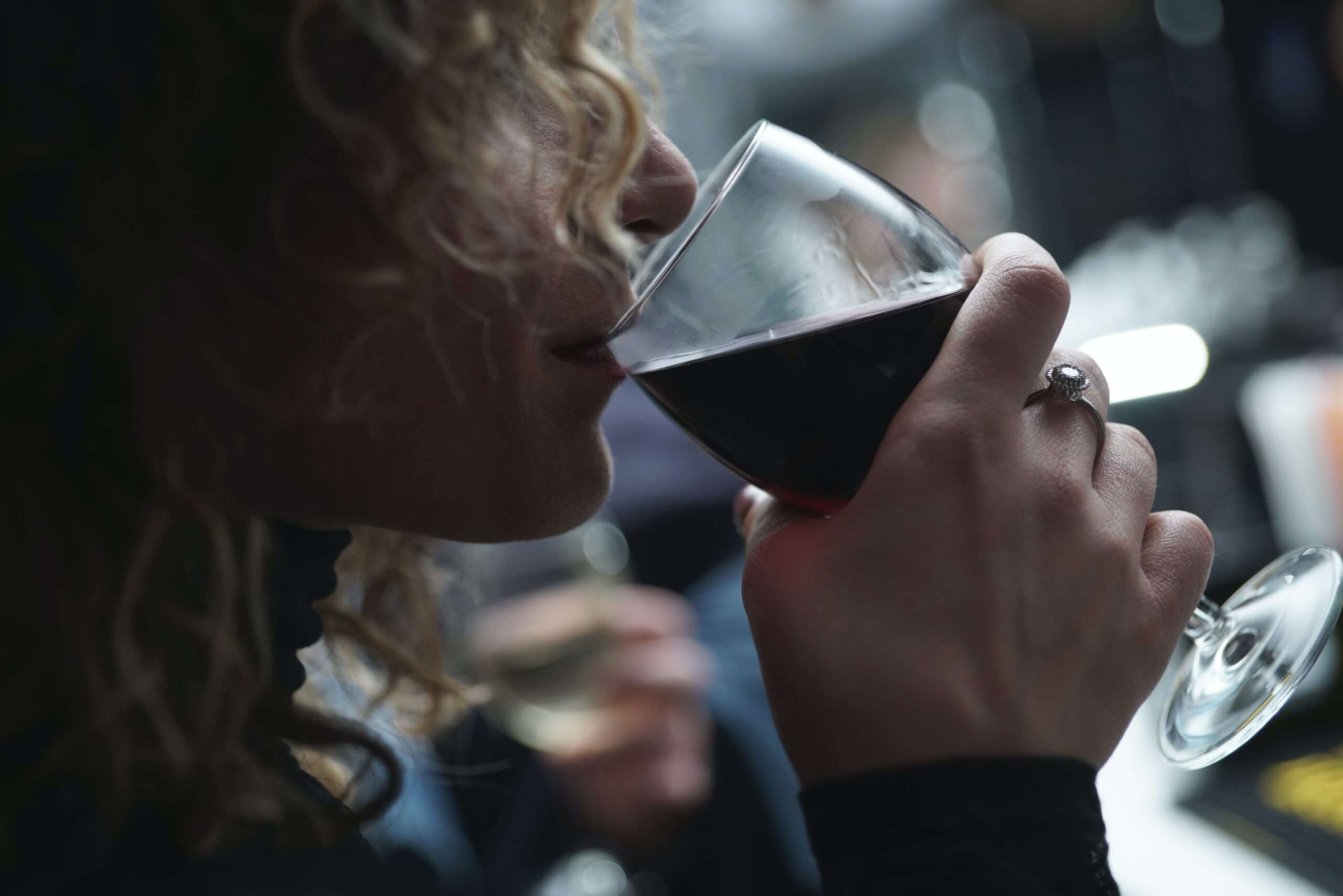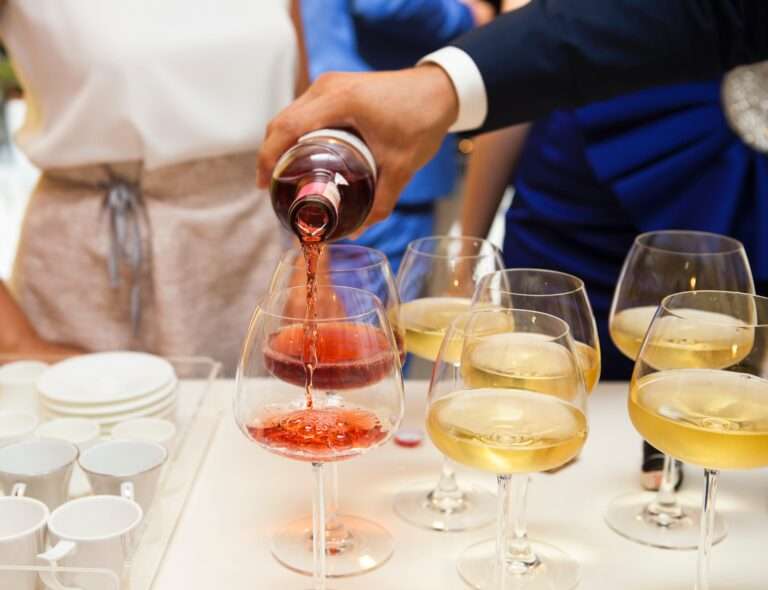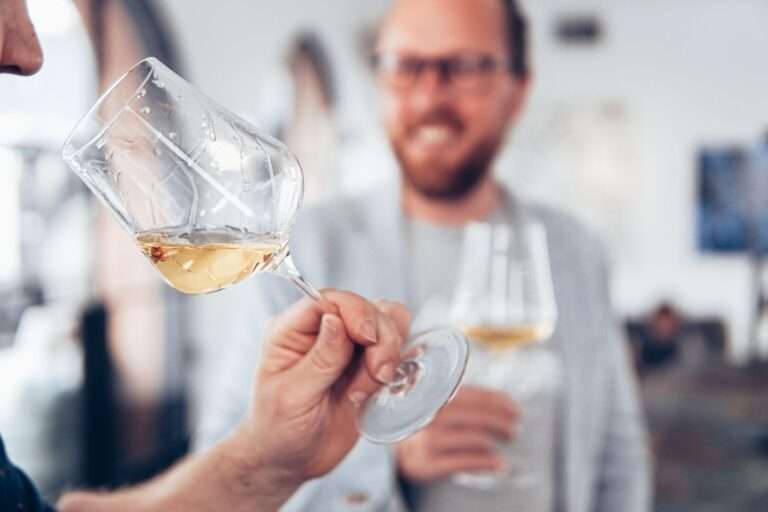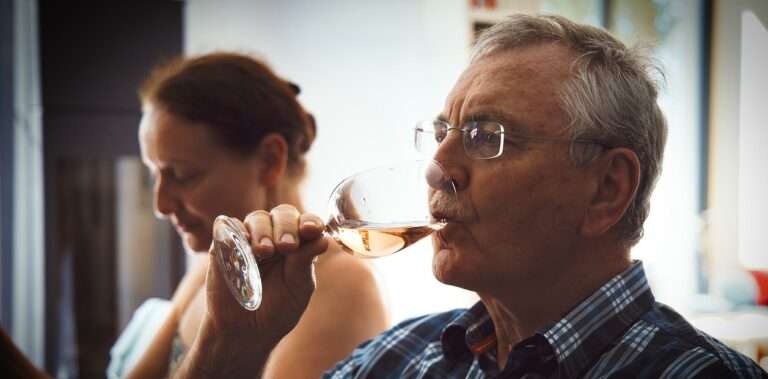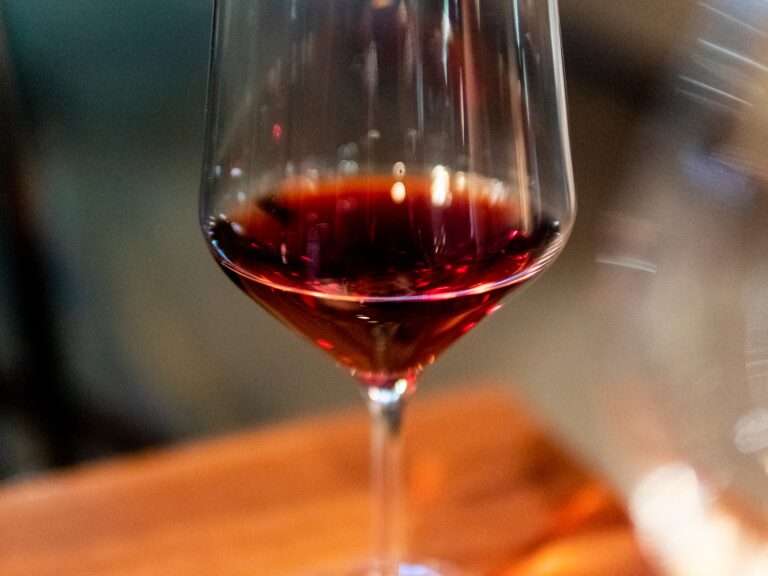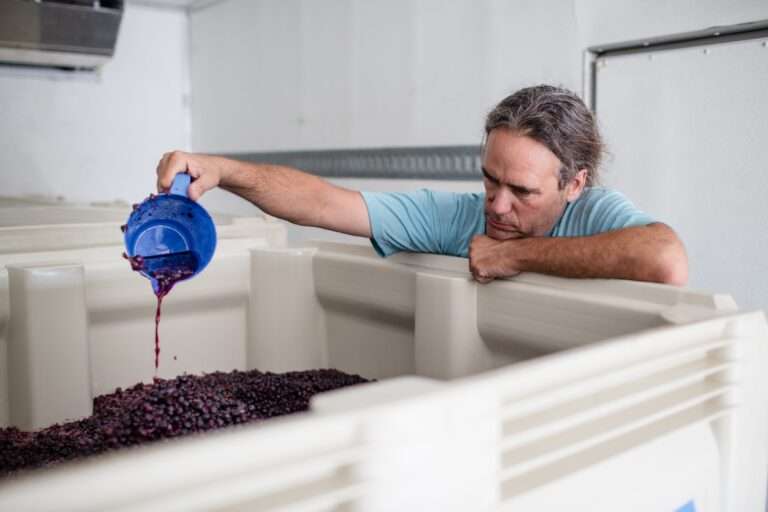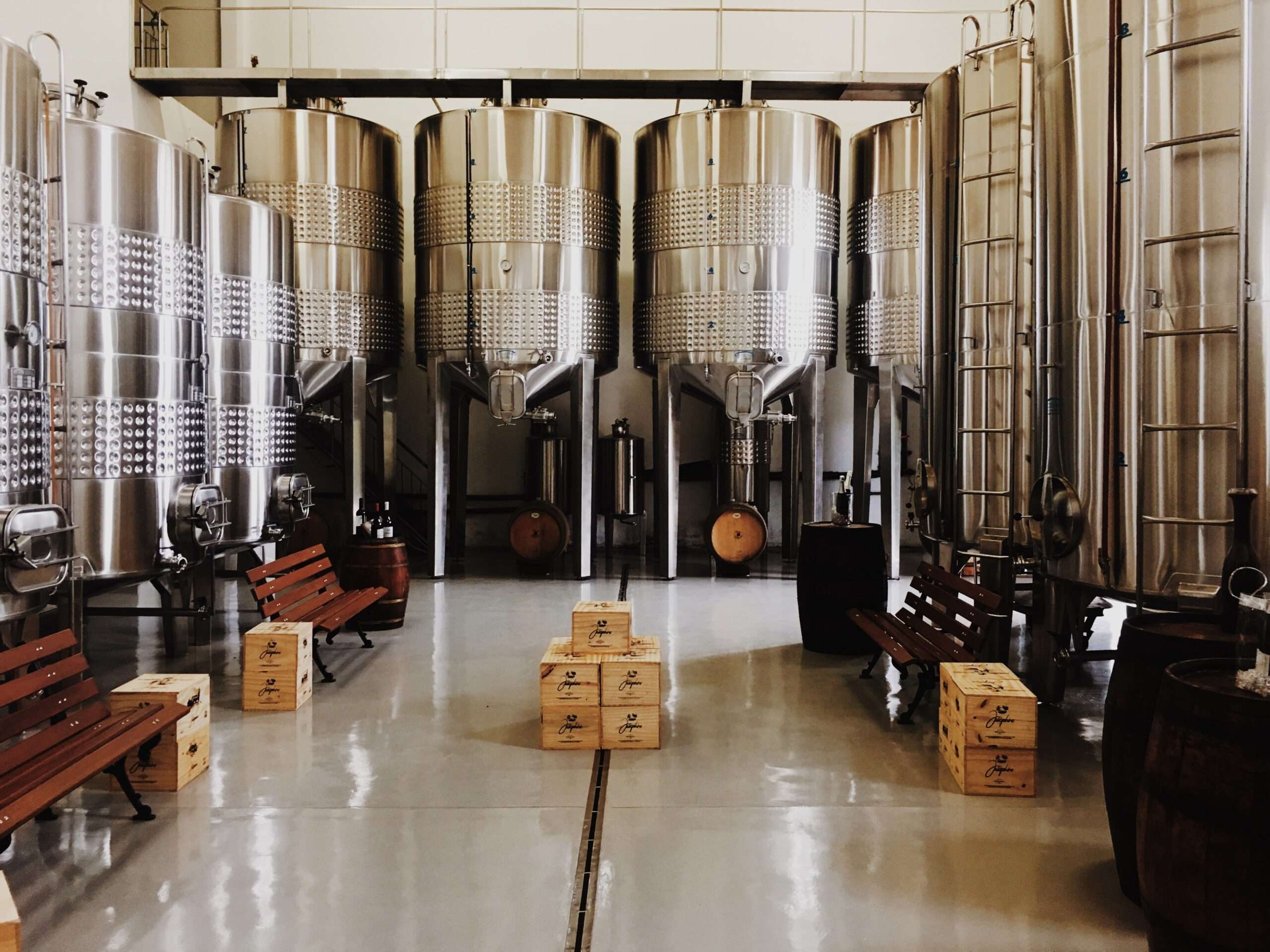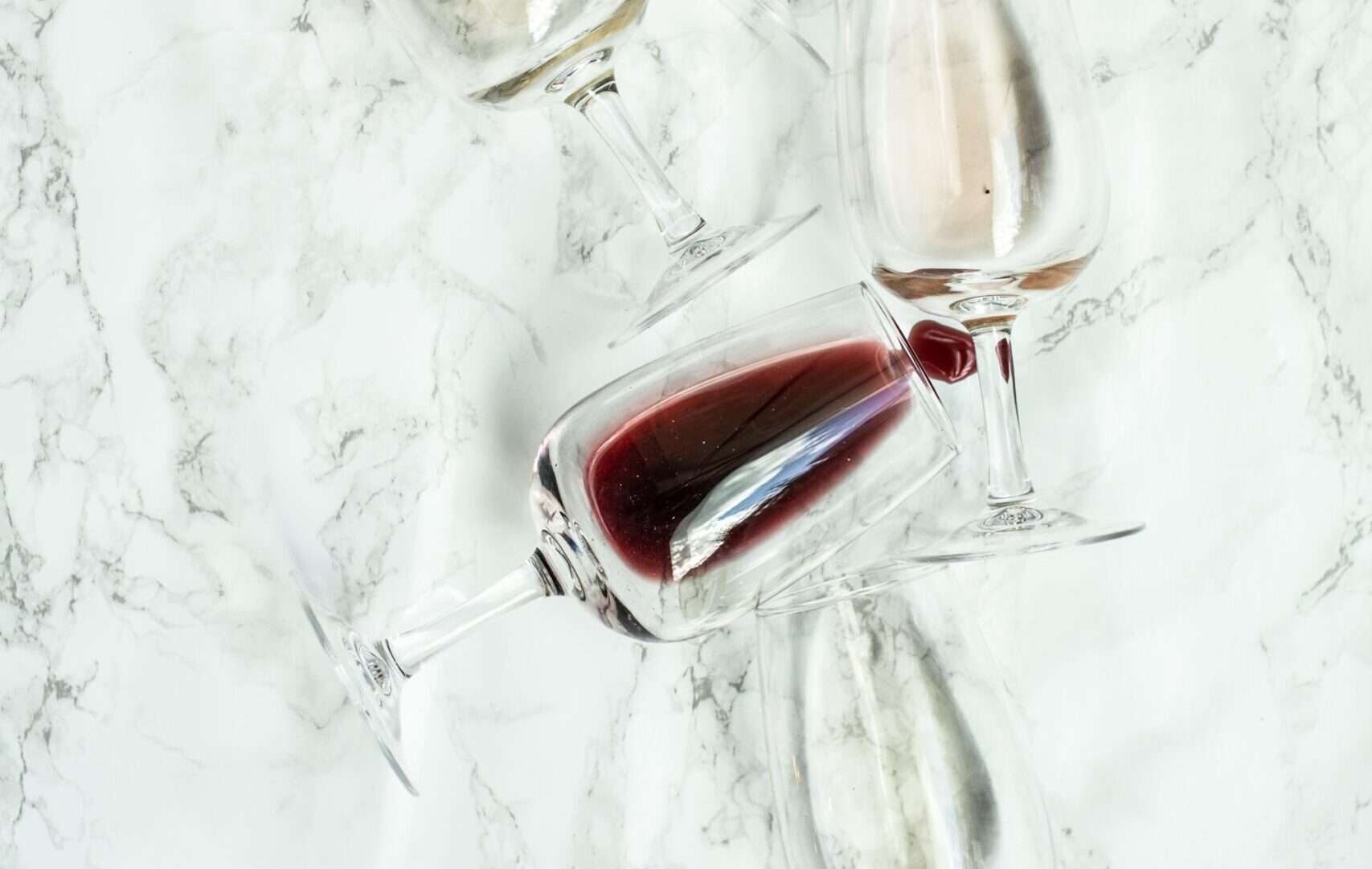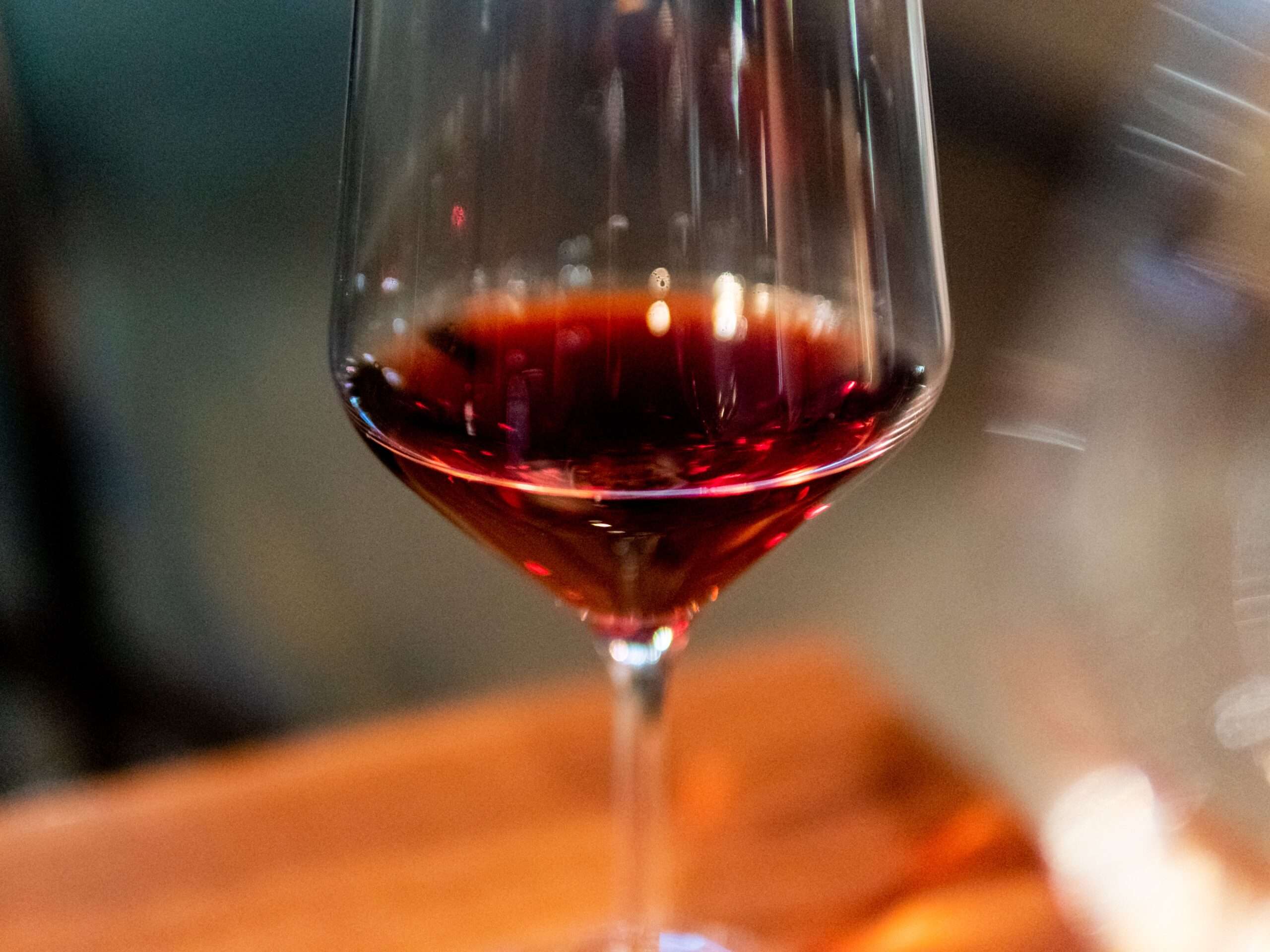We say salud, santé, prost! Wine appeals to our senses and a sense of well-being. And, with a quick clink of glasses, cin cin! Glasses are held high to drink to good health. We tell the region, varietal, and vintage from wine bottles’ labels but not necessarily if a wine has turned.
Wine can turn. Wine gets spoiled as chemical compounds change and break down when oxygen enters a bottle. Oxidized wine tastes acerbic like vinegar, smells like nail varnish, is cloudy, and no chef will cook with it. If wine turns, there’s little left other than pouring it down the drain.
Spoiled wine is best, not drunk. Oxygen aerates the wine, and without proper corking, the wine goes bad. When to finish an opened bottle is good to know as left uncorked for too long ruins the wine. You can taste and smell turned wine or simply hold a glass of wine to the light to see the discoloration. The tell-tale signs of when wine turns are worth knowing.
How Does Wine Turn
Wine turns when the care put into making wine goes sour for many reasons. The fine art of vinification (another word for wine-making) starts with selecting grapes at the right time and a careful fermentation process to make alcohol. The majority of wines are still, but there are sparkling (with carbonation) wines too. Wines are red, white, and rosé, with the fermentation of each differing.
It’s hard to think that despite the care and diligence that goes into making wine, one can end with the wine turned, bad, and not drinkable. A lot can go wrong from the soil and climate where grapes are grown and the wine maker’s skills to ferment grapes and make wine. The growing and timing of picking are as central to making good wines as is the fermentation (and bottling).
White wines are made from the white grapes’ juice and not the skins, and the distinctive rosé color of wines are a mix of white and red grapes. Different parts of the grape are used for other wines, and it is the red grape skin’s taint that gives red wines their distinctive color during fermentation. Interestingly red grape skins used in the fermentation stage are kept long enough for the color.
In the primary phase of red, white, and rosé wine, the yeasts are either natural or added to kick-start the fermentation process. But mostly, winemakers gauge how much yeast is naturally on the grapes and don’t add yeast to ferment grapes. In the simplest sense, wine-making uses yeasts to convert sugars in the grapes to ethanol (or alcohol) with the by-product carbon dioxide left to evaporate.
Fermentation is a critical aspect of the alchemical transformation of grapes into wine. The art, finesse, and skill involved in making wine have intrigued wine lovers worldwide. But at the same time, it is not uncommon for this age-old fermentation process to go wrong. Wine can turn, and once it has, wine has no use.
Oxygen Is The Culprit That Causes Wine To Turn
Asking if wine can turn has an immediate response: of course! We know that if wine is not kept correctly, it’ll spoil. There are many reasons for spoilage besides leaving wine open, as once a cork starts to leak, that’s the end of good wine. Wine enthusiasts are constantly alert to ensure that oxygen, a stealthy culprit, does not creep into wines and spoil these.
Ever present and life-giving oxygen poses a threat to wines as oxygen is responsible for many chemical changes in wine, sometimes to aerate and improve, but largely spoilage. Oxygen alters the chemical structure of the wine. It causes the molecules to break up or split into smaller atoms or molecules. These changes in wine are visible in both reasonable and especially turned wine.
There are many instances in which oxidation can occur throughout the wine-making process. Oxidation can also happen after the wine has been bottled. From a chemistry perspective, natural antioxidants called anthocyanins, catechins, and epicatechins (and other phenols) quickly oxidize in wine. The wine loses its color, flavor, and aroma and flattens when this happens.
Winemakers balance oxidation by adding chemical compounds like sulfur dioxide or erythorbic acid to protect wine from oxidizing during the making process. The addition of sulfur to curb oxidation prevents the offensive taste or foul odor of wine that’s turned. The full-rounded body of good wine can disappear when the wine oxidizes.
When wine turns, the awful taste and smell result from oxidation and the organoleptic effect – the odious smells associated with wines that have turned. However, there are forms of oxidation like phenolic oxidation that aid the chemical compound ethanol in wine responsible for different wines’ flavors and taints of aroma.
We marvel at the complexity of the chemical structure of wines and the balance between flavors and aromas. Winemakers, therefore, keep the much-needed oxygenation of yeast to form alcohol at a minimum.
How To Taste And See That A Wine Has Turned
Like the 5 S’s in wine tasting, that of see, swirl, sniff, sip and savor, the look, smell, and taste of wine are useful to tell if a wine is drinkable or has turned. We enjoy wines for their flavor and aroma and marvel at wines’ clarity when poured. Wine tasting is as a ritual as the Japanese tea serving ceremony or rolling a Cuban cigar. Yet when a wine has turned, dump it.
Wine lovers, drinkers, and connoisseurs quickly develop a nose and a palate for wines. It’s easy to tell the different notes wines have and to smell the difference between full-bodied wines and those lighter wines. We can tell the age of wines, the kind of barrel used to mature wines which mostly are oak.
It does not take more than a swirl of wine in our mouths to know if it tastes dry or sweet. With experience, we can even tell that a wine is aged compared to younger wines. We might even be able to learn to describe how the wine was matured. We can also tell if wine is past its peak, turned, and is bad.
You might not be able to see the exact process of wine turning with your naked eye. Look out for tell-tale signs. You can tell when the tiny atoms in a wine’s compound structure start to change and break down due to oxygenation. There are obvious clues of spoil, and oxygenated wine is not pleasant to drink, tastes off, or is wrong.
| Signs | Good Wine | Turned Wine |
| Look As Color | Clarity In Color and Appearance | Murky, discolored In color |
| Smell As Aroma | Fragrant In Aroma | Dank, Musty Aroma |
| Taste As Flavor | Fruity Taste And Palate In Flavor | Stale Palate In Taste And Flavor |
The Color Of Wine As Measure Of Turned Or Good
If you suspect wine has turned, pour a taster-sized glass and hold it up against a white paper or a white napkin. The intensity of the wine and the concentration of its color will either be clear or murky. The clarity of the wine indicates a drinkable wine, and the opacity shows that the wine has turned.
The clarity of good white wine, for example, has a pale, even lemony color and can be darker depending on the whites’ age. A deeper color is also indicative of wine matured in oak. However, the delicate color and the deeper, older, or barrel-matured tones are distinctive and unlike the murkiness of white wines that have turned.
Just as the clarity of white wines is a clue on how good these are, so is the color. The clarity of reds shows at a glance how drinkable these are. Red wines’ color depends on age, and with clarity as a marker, one can tell if a wine has turned. Red wines’ have a garnet red for younger wines, and mature wines’ have deep ruby tones, especially the older wines.
Grape skins in the fermentation stage give wines their distinctive color, which, interestingly, reds loose with age. Whites are not fermented with skins but can attain a deeper pigment as these wines age and still be good. The clarity of the wines shows the quality, and a turned wine lacks such clarity. Murkiness or a cloudy wine shows it has turned, primarily because of oxygenation.
The Smell Of Wine As Measure Of Turned Or Good
The nose of a wine is as attractive as the palate. We can smell the wine’s fragrance and quality. What we sense when we put our noses to a glass of wine gives us the closest contact with the aromas of the wine. Wine lovers are quick at taking on the manners of connoisseurs, swirling a glass of wine to release the flavors.
A wine that has gone bad has lost its aroma and is musty. The much-loved citrusy overtones or oak-barrelled vanilla and coconut ones are lost. Instead, as many have described, turned wine smells like wet cardboard or even a wet dog! This is also how to tell if a wine might have oxidized and turned.
Much like the color of spoiled wine can have a brownish tinge in reds, the white wines go a deep yellow or brown straw color. Left uncorked, wines become vinegary in taste. A lousy wine has various descriptions, from garlicky to cabbage and even burnt rubber overtones. Sometimes faulty from before bottling, tasting the wine is the best way to judge if it should be drunk.
Taste Of Wine As Measure Of Turned Or Good
The wine’s look, nose, and taste are influenced by how wine is kept. One’s palate is super sensitive to the taste of wine, and as such, one can even tell the age of a wine. We can also taste if the wine was aged in a barrel or a bottle. And definitely, we can tell from tasting if a wine has turned.
The taste appears to be as descriptive as people’s imagination. It stretches from describing the honey overtones of wines to the smell of tobacco, leather, and other earthy tones. Wines are likened to the tastes of nuts, especially the richer hazelnuts. Most commonly, it has been the fruity overtones picked up on.
Some say white wine tastes like dried apricots and orange marmalade. Reds are commonly associated with fruits like berries, figs, and prunes. But what’s most significant is that the wine that’s turned has none of these tones of flavors. One tiny sip is the quickest way to tell if a wine is bad. The sharp vinegary flavor or pungent acetone aroma means that wine has turned.
Oxidized Wine And Chemical Breakdown
The loosening or chemical breakdown of wine from oxygen can happen even before the wine is opened. Mostly post-bottling oxidation occurs through a cork on a bottle. The color of oxidized wine is darker, and reds look browner. The overwhelming test is a vinegary taste. There, however, are instances in which a bottle is left open to enhance flavors and aromas.
- Early Oxidization. To kick-start fermentation.
- Turn Before Bottled. Winemakers would not bottle a turned wine.
- Oxidation To Aerate. Wines are left open for a period before drinking to breathe.
It’s common in wine circles to deliberately aerate wines, interact with the air or oxygen, and let the wine breathe. But leaving an open bottle uncorked for long will have a different effect. Once the wine is opened, it oxidizes and goes bad. A wine that’s turned or gone bad tastes like vinegar.
There are instances to detect wine spoils, like:
- Wine Left Uncorked. Wine turns when an opened bottle is left uncorked. Letting air or oxygen into the bottle over a period destroys wine’s good flavors and aromas.
- Spoiling When Not Kept Properly. As oxygen interacts with chemical compounds in the wine, even the best wines are easily spoiled when not appropriately kept or sealed.
A clue as to why wines go bad is that the bacteria in wines use the sugar in the grapes to ferment. When this happens, bacteria are exposed to oxygen, turning the wine’s sugars and alcohol into acetic acid. The oxidation process occurs though the time wine takes to turn is not immediately. Wine has definitely turned when it tastes like vinegar.
On average, wine stored correctly after opening can last. White and rosé wine can last 3–5 days in a refrigerator. Red wines last between 3–and 6 days. Well-aged reds have sediment, the lees or dregs, as these wines are made from whole crushed grapes. It is also good to know that wine’s sediments are not a sign of bad wine.
What Does It Mean To Say Wine Is Bad
A wine that has gone bad is spoiled. Though bad wine is unlikely to cause long-term harm, the microbes can cause symptoms similar to food poisoning. If you think wine is off, pour it down the drain.
The smell and taste are the best and fastest clue that chemical changes to a wine’s compound structure have happened. The astringent tones and lack of fruitiness, and the cork (which might be pushed out) are signs that wine has turned (in the bottle).
Whether a wine is as good as it should be, is often difficult to discern. Sometimes through ignorance, wine is dismissed as bad. Bad wine is rare, though. The international sommelier Michael Madrigale says he has opened roughly 150 wines a night, and only one might have been poured down the drain. The critical reasons for dumping a bottle are oxidation, as open wine is left out too long and uncorked.
Wine is dismissed for the noticeable brown color and the musty metallic smells. Forms of oxidation are part of the wine-making process, but when air slips in, whether, through a too dry cork of wine stored incorrectly, the result is a bad bottle of wine.
Conclusion
Generations of tradition across several centuries suggest that wine-making can’t easily go wrong. The art and finesse of making wines make it hard to point-blankly write off wine as turned or bad. With wine on a pedestal and the makers, too, one feels that any error in taste escapes even their responsibility.
Our appreciation of wines goes hand in hand with developing a nose and palate for wines. So too to know when and if a wine has turned. This simply means that we need to know when the wine is bad.

